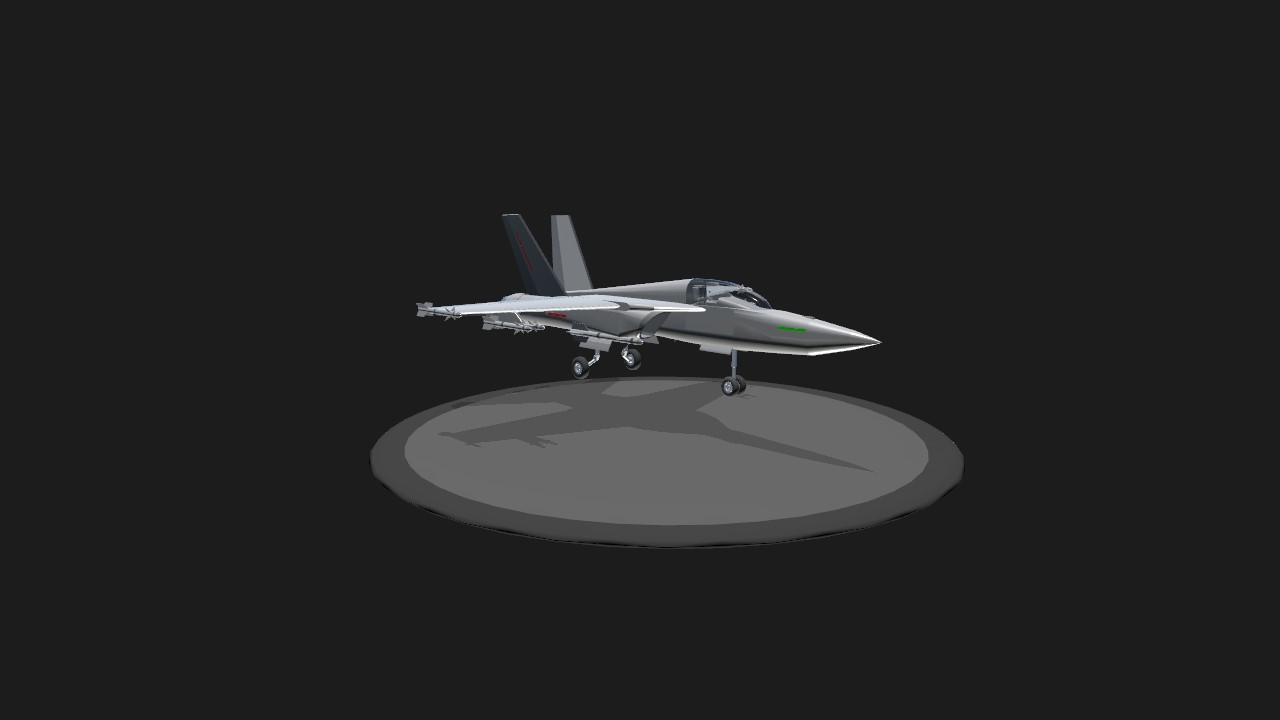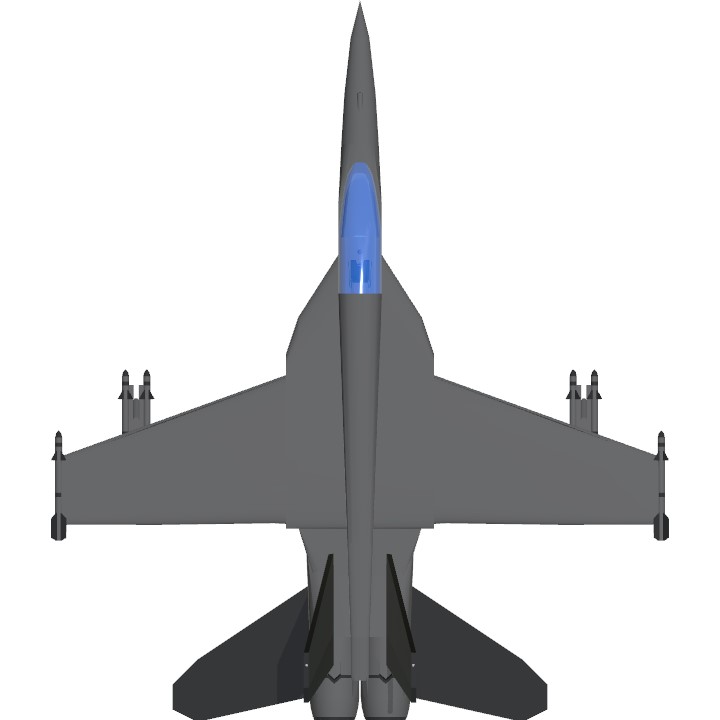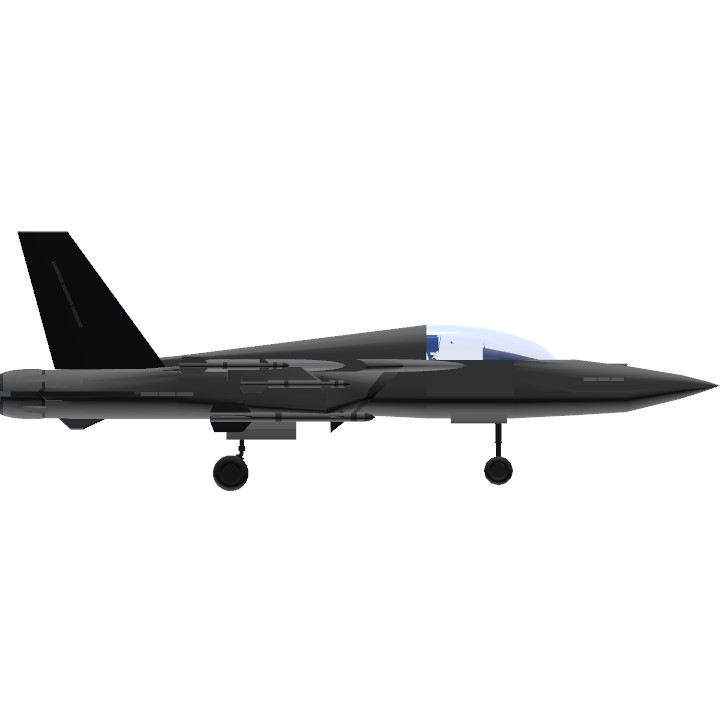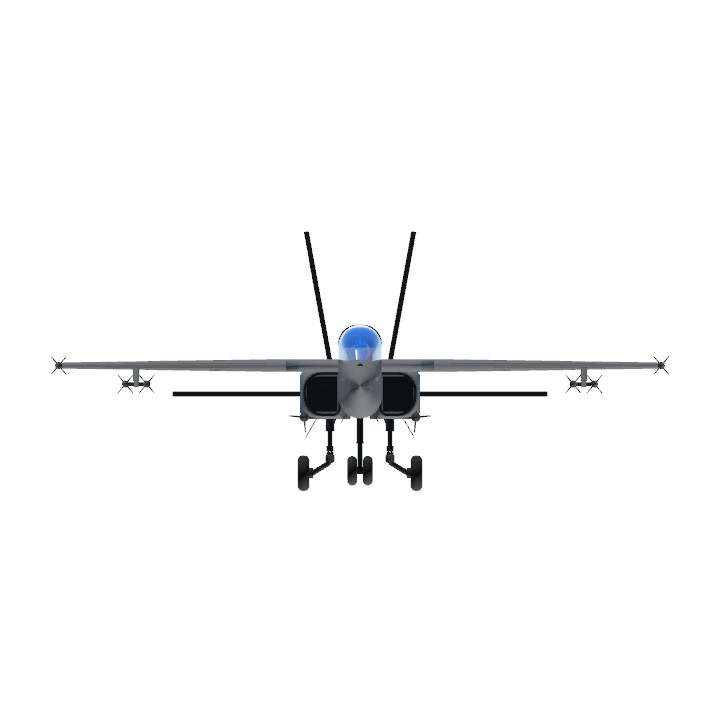This is my attempt on the F/A-18A so far. I didn’t make it mainly for looks but for the functionality. Everything looks basic aside from the hud… but the stuff I used to make it how it is sure isn’t. It still isn’t finished but I’ll get there eventually. Other than the small rant about this I hope you enjoy this and details are included down below. (Btw thanks for planaria for the hud because it helps quite a bit)
Controls:
Trim:
Airbrake (trim down for airbrake)
VTOL:
Flaps
Activation groups:
AG1: Canopy
AG2: Arresting hook
AG3: Afterburner (95% throttle or more)
AG4: Lights
AG5: Stabilizer (read “warnings” before use)
AG6: Jettison weapons
AG7: Eject
———————————————————————
Warnings:
1. During takeoff, do not pitch back all the way to get off the ground as you’ll just flip and possibly explode. (Ejecting won’t save you most of the time)
2. When using the stabilizer (AG5), be careful not to use too much pitch and crash as it increases the max angle of the elevators and I haven’t figured out how to fix the problem yet.
3. When pulling back all the way the plane can start to do something called adverse yaw. What this is, is where you try to roll one way but roll the other way instead. This can be solved by either getting to higher speeds around 625 mph (~1000 kph) or more. Or you can use less pitch depending on what your speed is.
4. Don’t eject straight off the ground, it won’t end well… seat isn’t invincible.
———————————————————————
Notes:
Instruction issues:
I’m gonna fix the info in the instructions since it’s outdated and I don’t want to give false info about this F/A-18A flight characteristics and info. So I’ll improve that and get complete results for everything.
Weaponry:
1. The missiles are made to be realistic as their real life counterparts, although with balancing so it’ll actually hit since this is simple planes.
2. The way they are enabled is by being in range and putting your target into the angle limit of the missile, not the cockpit. Then you can fire the missile.
3. You may notice a little blue dot fall off, and that’s a detacher so the missile can clear the aircraft.
4. The missiles on the F/A-18A are:
x6 (Aim-9M):
Gimbal limit: is +-40 degrees
Range: 4.5km
Life time: 7 seconds
Type: IR
x2 (Aim-7MH):
Gimbal limit: +-40 degrees
Range: 35km
Life time: 25 seconds
Type: SARH (Semi-Active Radar Homing)
Radar:
There isn’t really a radar but this is here to make the Aim-7MH make sense. It has a limit of 70 degrees and you have to have the nose of the planes within that limit to guide the Aim-7MH.
Ejection seat:
This isn’t necessarily a new concept in simple planes but still a good thing to have, especially for people like me… Anyways it has a rocket booster that will help get the seat away from the plane. This is the process of the ejection:
1. Canopy ejected
2. Detacher pushes the seat out of the cockpit
3. Rocket booster activates pushing the seat away from the aircraft
4. Rocket gets ejected since it self destructs and parachute deploys
Plane health model:
I decided to mess with the health at one point to make some parts have more health than others and this is most likely going to be tweaked later on.
Looks I guess:
Try turning the lights on at night with the afterburner, I think it looks kinda cool and I hope you enjoy it too.
Auto trim system (WIP):
The auto trim system uses wings at the front that are tuned to increase and decrease trim based on speed. It still could be improved but it’s better than nothing considering the plane is a bit unstable and has a tendency to pitch one way on its own, so it really helps minimize the problem.
Codes: I’ll post the codes later but you can look at the codes to see how it works if you want.
——————————————————————————————
Engine:
Engine (basic):
When you spawn in and turn the engine on, you don’t go from zero to mach in 0.2 seconds, it starts off slow. This isn’t because it’s weak, it’s because of some code that somewhat simulates better acceleration for the aircraft. This basically means the faster you go the more power from the engine you get. The afterburner on the other hand increases your acceleration by a lot and also top speed as well but also drains your fuel faster than without the afterburner. So be careful of how long you use the afterburner.
Engine and how it works (advanced):
Intro:
Aside from the “basic” explanation just from earlier, the engine is actually multiple engines to improve the sounds and looks, as well as the functionality. The following is the function of each engine you can find on or in the plane.
Main engines:
The two main engines are the engines that are enabled without afterburner. They use FT that controls the thrust based on speed. The highest thrust it produces is at a speed of 550m/s.
(Every engine after this is hidden in the F/A-18A)
Afterburner main engine substitute:
This engine is located in between the two main engines and provides the thrust that the main engines would give without afterburner. This isn’t a backup, but to keep the realism of the main engines while the afterburner is turned on. The reason it’s there in the first place is because the only way to widen the exhaust nozzle is with throttle and I have to turn off the engines for that.
Speed depletion control engine:
This engine is for slowing the deceleration when turning and you have to be above 125m/s for this to work.
Afterburner sound improvement engine:
This engine is there to make the fuel consumption be somewhat more realistic, and to make the sound better instead of just the VTOL engine.
Afterburner engine:
This engine does the most of the boost and VFX for the afterburner. It doesn’t completely cancel the main engine’s realism but it heavily increases acceleration. (The VTOL nozzles was a pain and a half to get working)
Main engine sound improvement engine:
This engine near the back (or the main engines) is used for SFX for the main engine but also assists a tiny bit in stabilizing the aircraft.
It took me a total of around 3-4 hours writing this stuff down and I wouldn’t blame you if you aren’t reading all of this… though still use this as a guide.
Specifications
General Characteristics
- Predecessor 1Part HUD
- Created On iOS
- Wingspan 40.1ft (12.2m)
- Length 47.3ft (14.4m)
- Height 16.8ft (5.1m)
- Empty Weight 8,775lbs (3,980kg)
- Loaded Weight 23,584lbs (10,697kg)
Performance
- Power/Weight Ratio 13.185
- Wing Loading 47.2lbs/ft2 (230.6kg/m2)
- Wing Area 499.4ft2 (46.4m2)
- Drag Points 5503
Parts
- Number of Parts 246
- Control Surfaces 10
- Performance Cost 1,334




